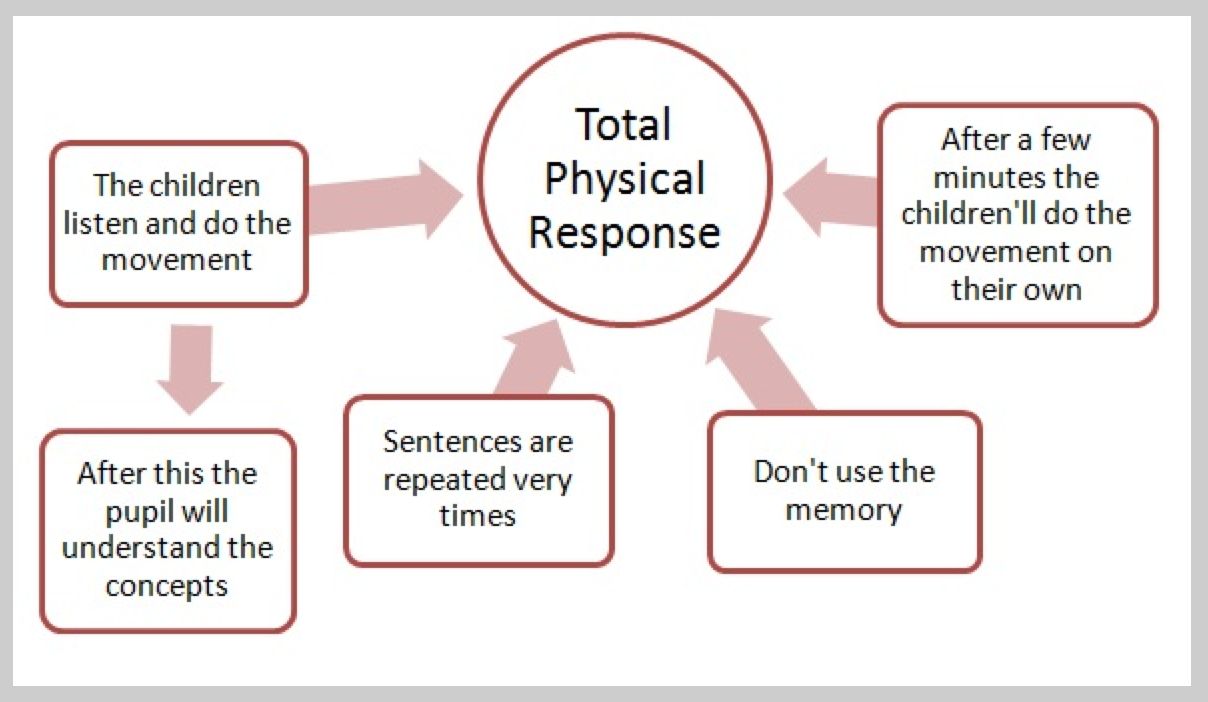Total Physical Response
x
1. The Total Physical Response Approach
The Total Physical Response method, or TPR (Asher, 1972) is a contextualized approach developed by a psychologist to help students incorporate physical and mental processes in learning a new language. It is a highly effective approach because it employs the use of fun, movement, and instruction via physical commands, similar to the game "Simon Says." The teacher gives a command in English, and students respond. The teacher models the approach first, then students follow. after a few times, the teacher may stop and just state the command, scaffolding the responsibility for understanding to students. Students who do not understand can look around at other students and follow their actions. It is the repetition that allows students to eventually understand the spoken commands, and without having to respond verbally if they are not ready to. Here are some typical TPR commands:
- stand up
- sit down

- turn around
- raise your hand
- touch your head
- pick up the book
- put down the book
- walk to the door
- touch the door
- turn around
- sit down
Longer versions can be introduced eventually, such as: walk to the door, touch the door knob, turn around, and then sit down.
Shift the responsibility to students eventually, having them call out commands in turn as the teacher would. language proficiency develops as they listen and respond on their own without the need to look around, and as they call out their own commands in language practice.
Introduce visuals to support commands such as pictures and objects. Commands that correlate with this use would be for example:
-
-
-
- Give me the book.
- Paul, give Helena the book.
- Raul, give her the book
-
-
Reinforcement can also be provided by writing down the worded command or the question. They can be written ahead of time and pointed to, or they can be written on-the-spot.
Activities can also include pictures and labels on any vocabulary word referenced, such as a bathroom fixture, a faucet, sink, desk, locker, pencil, pen work station, closet, chalk, eraser, computer, keys, and so forth. Common vocabulary words needed for these activities can be sprinkled about the room. Beyond TPR they are strong ways to build sight vocabulary. AS the teacher speaks the command, he or she can point to the visual and the word. For example:
-
-
-
- I am opening the door.
- I am entering the bathroom.
- I am sitting down.
- I am washing my hands.
- I am putting sanitizer on my hands.
- I am turning on the faucet
-
-